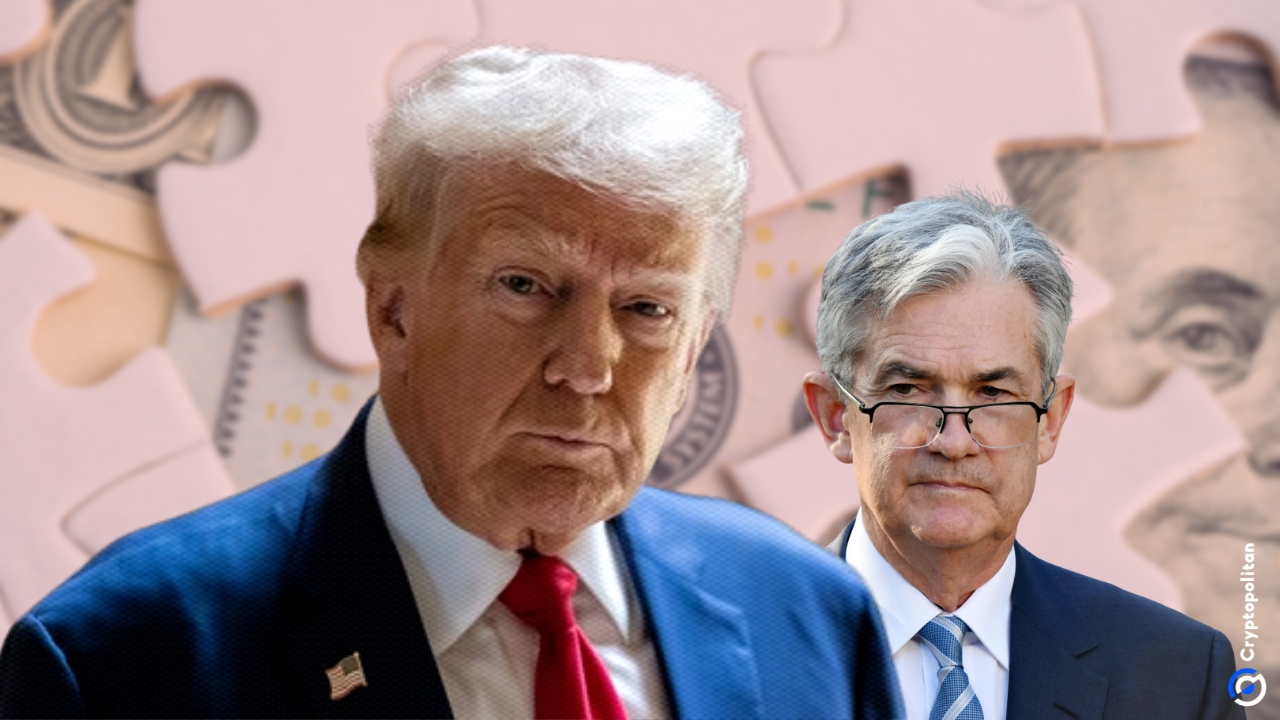
President-elect Donald Trump has shut down speculation about Jerome Powell’s removal from his position as Chairman of the Federal Reserve. This speculation comes from his saying during the election campaign that he would assume the presidency of the Central Bank and would be responsible for the economy himself.
But now, in an interview on NBC Learn about journalismTrump said: “Fire him? No, I don’t see that.”
“I think if you ask him to, he will,” the president added. “But if you asked him to, he probably wouldn’t.” He seems to know his man well. He appointed him, after all. Powell has made it clear he’s not going anywhere.
Days after Trump’s win, the Fed chairman reaffirmed the central bank’s independence, telling reporters that he would not step down if asked to do so, and that the president had no authority to fire him or other senior Fed leaders.
Trump’s position on Powell and monetary policy
Trump’s views on the Federal Reserve have long been controversial. He sincerely believes that the president should have more influence on monetary policy.
In an October interview with Bloomberg, Trump said: “I think I have the right to say: I think you should go up or down a little bit.” I don’t think I should be allowed to ask for that, but I think I should be able to comment.
He didn’t stop there. Trump mocked Powell’s job as “the greatest job in government.” In his words, “You come into the office once a month and say, ‘Let’s see, flip a coin.’”
It’s no secret that Trump’s frustration with Powell stems from the Fed’s interest rate hikes during his first term, which Trump believes slowed economic growth.
Back in 2018, Trump considered firing Powell but did not follow through. Legal scholars have pointed out that removing the Fed chair is not as easy as giving the order.
The Federal Reserve Act only allows the removal of board members “for cause,” which means serious misconduct or abuse of power, not just disagreements over policy. “Looks like I’m stuck with you,” Trump told him by phone one night from the Oval Office.
Despite their previous clashes, Powell said he did not expect new tensions with the Trump administration. While Powell’s term as chairman runs through 2026, his 14-year term as Fed governor will not end until 2028, giving Trump limited room to replace him immediately.
President’s power over the Federal Reserve
The President of the United States has the power to appoint members to the Board of Governors. This includes choosing key roles such as President and Vice President. Governors serve for 14 years, and presidents serve for four years.
They are all members of the Federal Open Market Committee (FOMC), the group that decides interest rates. During his next term, Trump will have at least two opportunities to appoint members to the Federal Reserve Board. One of these openings will come in January 2026 when Fed Governor Adriana Kugler’s term ends.
These appointments will require Senate approval, but with a Republican majority in the Senate, Trump will likely face less resistance than he did during his first presidency, when many of his picks were blocked from the Fed.
Even with these appointments, Trump’s influence is limited. The Fed’s policy-making structure includes 12 regional bank presidents who are independently selected by their respective banks’ boards and subject to Fed approval. This decentralized system reduces the president’s ability to directly control monetary policy.
Trump is not the first president to try to influence the Fed, but his approach has been one of the most popular. He often airs his grievances in press conferences and interviews, accusing Powell of making bad policy decisions.
He also criticizes the Fed’s record, saying they “got it very wrong.” According to Trump, Powell’s timing on key decisions was “a little too early and a little late.”
The issue of Federal Reserve independence
The central bank’s role is to manage inflation and employment without political interference, which Powell believes is necessary to maintain credibility with investors and the public. “Without question, the Fed must remain apolitical,” Powell said earlier this year.
But the reality is more complex. The Federal Reserve often operates within a political context, cooperating with the Treasury Department and taking into account the economic impact of government policies such as tax cuts or spending initiatives.
Critics argue that this interaction makes it impossible for the Fed to be completely apolitical. Economists like Peter Conti-Brown, a Federal Reserve historian at the Wharton School, describes The Federal Reserve as a “deep political institution.”
However, he distinguishes between politics and partisanship, emphasizing that the Fed’s decisions often reflect input from multiple factions.
Despite these challenges, the Fed has maintained its independence for more than a century. Central banks around the world rely on this model to make difficult decisions, such as raising interest rates to fight inflation, without fear of political reprisal.
A step-by-step system to start your career at Web3 and get high-paying coding jobs in 90 days.
Source: https://www.cryptopolitan.com/president-trump-says-he-never-wanted-to-kick-jerome-powell-out-of-the-federal-reserve/
